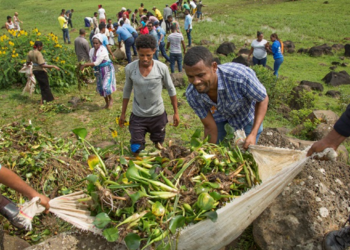Revitalizing the Western Indian Ocean: Conservation Triumphs in Wetland Restoration – Wetlands across the Western Indian Ocean region stand as more than just aesthetically pleasing landscapes; they are crucial ecosystems supporting a rich variety of life. Comprising salt marshes, seagrass beds, and mangrove forests, these habitats serve as homes, breeding grounds, and feeding areas for numerous species, including fish, turtles, sea cucumbers, mollusks, corals, mangroves, and seagrasses. Beyond their ecological significance, these wetlands also hold substantial economic and cultural value. Unfortunately, human activities, such as pollution, agriculture, deforestation, and natural disasters, pose imminent threats to their existence.
Guardians of Biodiversity: The Vital Role of Western Indian Ocean Wetlands
Amid these challenges, there is optimism as concerted efforts are underway to protect and sustain these invaluable wetlands. Collaborative initiatives by the UN Environment Programme (UNEP) and the Global Environment Facility are making a significant impact on the conservation of biodiversity in the Western Indian Ocean region. From boosting drainage capacity in Chake Chake, Pemba, to educating locals in Seychelles on wetland restoration, to replanting mangroves in the Limpopo estuary in Mozambique, and treating raw sewage in Mtwapa Creek, Kenya, these endeavors are playing a crucial role in preserving the region’s ecosystems.
Threats Unveiled: Human Activities Endangering Precious Ecosystems
One notable success story is the restoration project in the Plaine Hollandaise-Pasquière wetlands in Seychelles. Deteriorating due to historical forest fires and subsequent soil erosion, these wetlands are undergoing revitalization through anti-erosion methods, native species planting, and community involvement. The restoration not only breathes new life into the wetlands but also attracts rare and endangered species like the Sooglossid frog, previously thought to inhabit only high altitudes. The renewed wetlands promise economic and physical security to the Seychellois community by preserving the aesthetic and functional aspects of the Curieuse Marine Park.
A Beacon of Hope: Collaborative Efforts for Wetland Conservation
In Tanzania’s Zanzibar archipelago, constructed wetland technology is being employed to tackle pollution issues. With a focus on Chake Chake Town, this initiative aims to enhance waste and stormwater drainage capacity, supporting the existing wastewater treatment system. By mimicking natural wetland processes, constructed wetlands effectively purify water, ensuring the longevity of Zanzibar’s coastal ecosystems that are vital for the well-being of over 1.3 million residents.
Seychelles’ Success Story: Restoring Plaine Hollandaise-Pasquière Wetlands
Mozambique’s Mahielene community faced a severe setback in 2000 when Cyclone Eline destroyed nearly 60% of their mangroves. These mangroves, crucial for livelihoods and coastal protection, are now being restored through collaborative efforts. The project not only aims to bring back mangroves but also introduces alternative livelihoods like beekeeping and pig farming to enhance food security and mitigate the impact of future cyclones.
Tackling Pollution in Tanzania: Constructed Wetlands to the Rescue
Meanwhile, the Mtwapa area in coastal Kenya witnessed environmental hazards due to untreated sewage from Shimo la Tewa prison. Constructed wetland technology is being employed to manage wastewater, reducing harmful chemicals by over 40% and benefiting local ecosystems, including delicate coral reefs in the Mombasa Marine Park. This project showcases the potential of these artificial wetland systems in restoring the health and beauty of environmentally sensitive areas.
Mozambique’s Mangrove Renaissance: Rebuilding After Cyclone Eline
The wetland and water quality improvement projects are part of the larger Nairobi Convention’s WIOSAP project. Implemented by UNEP and executed by the Nairobi Convention with funding from the Global Environment Facility, these initiatives underscore the importance of international cooperation in safeguarding the Western Indian Ocean’s precious ecosystems from land-based threats.
Revitalizing the Western Indian Ocean: Conservation Triumphs in Wetland Restoration









